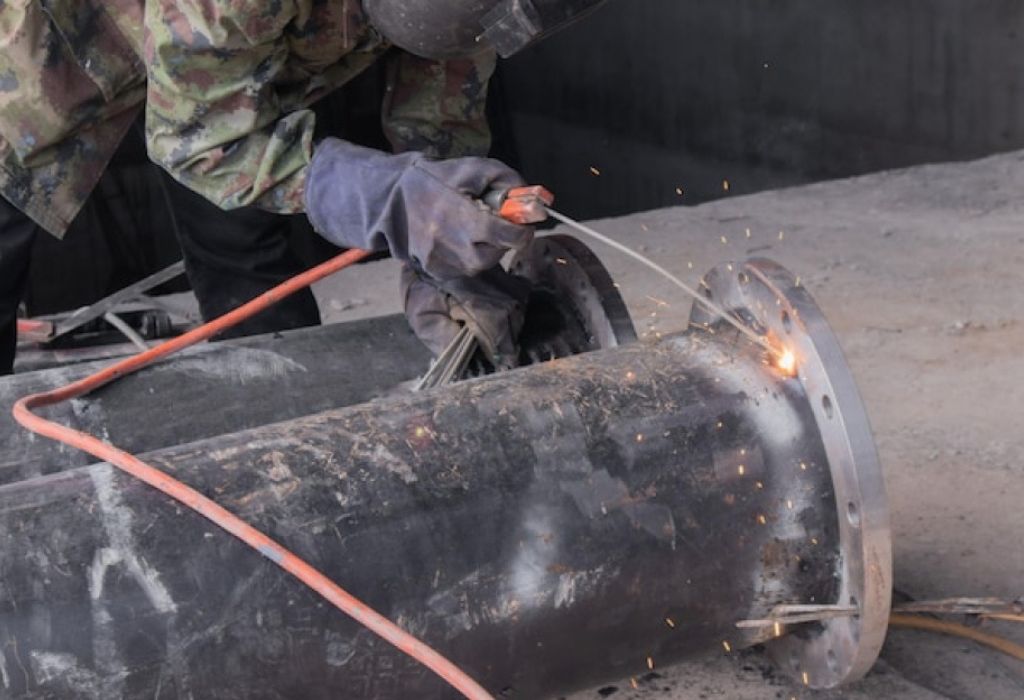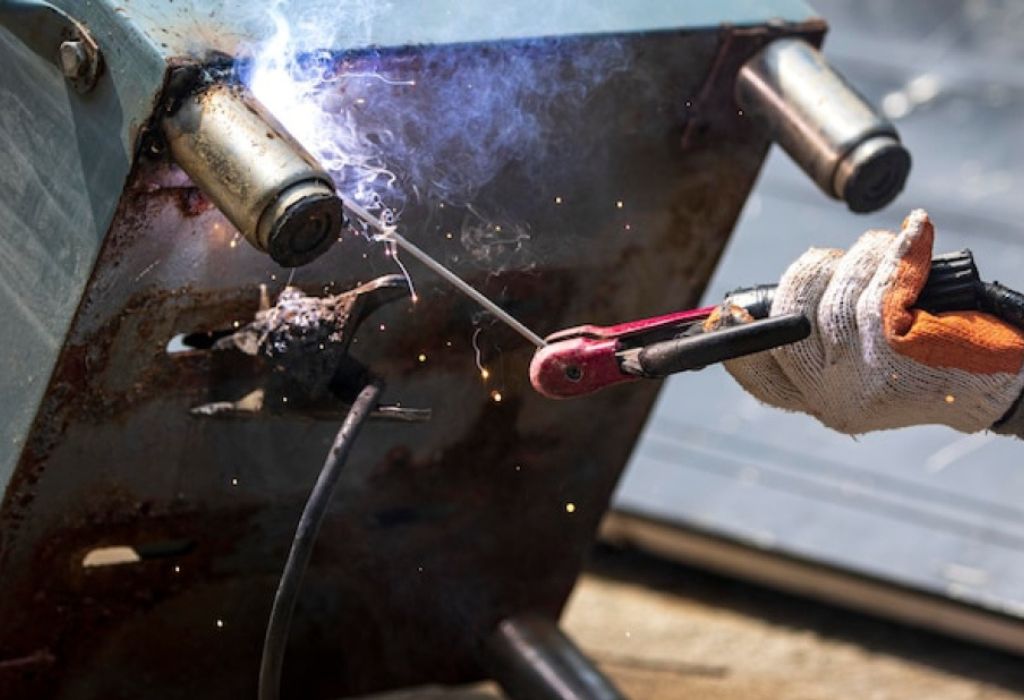A cracked gray-iron manifold sits on the bench and every bead wants to spider with hairline cracks. The question echoing in the shop is simple and urgent.
Can you TIG weld cast iron without turning a small repair into scrap.
Yes, but only with strict heat control and the right filler plan. Cast iron holds about 2–4 percent carbon, which explains the brittleness and crack risk when it cools after welding. Twi Global
Typical preheat windows run about 500–1200 °F and overheating beyond 1400 °F enters a critical range that raises failure risk. lincolnelectric.com
Can you TIG weld cast iron

TIG on cast iron is viable for clean, localized repairs where arc control matters. The essentials are uniform preheat, short beads, nickel-based filler wire, peening while hot, and very slow cooling. lincolnelectric.com+1
Q&A
Can you TIG weld cast iron successfully
Yes, with nickel filler, preheat, and controlled cool-down to limit brittle zones. Midalloy
Which cast irons are candidates
Gray and ductile irons are commonly repairable, while white iron is normally considered unweldable. Twi Global
When is TIG the wrong choice
Massive, oil-soaked, or highly stressed castings favor stick with Ni electrodes or mechanical stitching over TIG fusion. welding.org.au
Is DC or AC used
Use DCEN with argon and the minimum current needed to wet in cleanly. Midalloy
Metallurgy basics: why cast iron cracks
Cast iron’s high carbon and graphite morphology give low ductility, so welding stresses create hard and brittle structures in the heat-affected zone if cooling is fast. Preheat reduces temperature gradients and helps prevent martensitic transformation. Twi Global
Understanding the specific iron matters because gray, ductile, malleable, and white irons respond differently to heat and dilution during welding. Twi Global
Q&A
What makes cast iron different from steel
Around 2–4 percent carbon and graphite phases drive its brittleness compared with low carbon steel. Twi Global
What turns a repair brittle overnight
Rapid cooling can form a hard HAZ with carbides or martensite that cracks under residual tension. Twi Global
Does preheating always help
Yes, because it lowers thermal gradients that cause shrinkage stress and cracking. lincolnelectric.com
Filler metals for TIG on cast iron
For GTAW, the common wires are ERNi-CI (Ni-99) and ERNiFe-CI (Ni-55). Each solves a different problem and both are standard in cast iron repair. Midalloy+1
Ni-99, ERNi-CI
Ni-99 produces a soft, highly machinable weld metal that is friendly for crack-sensitive gray iron and finish machining. pinnaclealloys.com+1
Ni-55, ERNiFe-CI
Ni-55 is stronger and more ductile than Ni-99 and is often preferred for multi-pass work or for castings with higher phosphorus. It is also used for cast iron to steel joints. lincolnelectric.com+2Weld Wire+2
Q&A
Ni-99 or Ni-55 for most TIG repairs
Pick Ni-99 for machinability and crack sensitivity, Ni-55 for strength or CI-to-steel joints. pinnaclealloys.com+1
What shielding gas is typical
Pure argon is standard for TIG and TIG-brazing workflows on cast iron. Miller Welds
Rod diameter rule of thumb
Match rod size to joint mass and keep current low to limit dilution and heat-affected width. lincolnelectric.com
Preheat, interpass, and cool-down control
Preheat the whole casting if possible for uniform expansion. Typical targets are 500–1200 °F by section size and grade, and do not exceed 1400 °F. lincolnelectric.com
Between passes, use short stringers, brush and re-clean, and peen while hot to counter shrinkage stress. Finish with blanket or dry media cool-down to slow the temperature drop. Internet Archive+1
Q&A
How hot should the part get
Remain in the 500–1200 °F window and stay below 1400 °F. lincolnelectric.com
Why peen between passes
Peening offsets tensile stress as the bead solidifies and cools. Internet Archive
What is the best way to cool
Wrap in an insulating blanket or bury in warm dry sand or vermiculite to slow cooling. Weld Guru
Is spot preheat enough
Full casting preheat is preferred because local hot spots invite cracking. Internet Archive
TIG setup and technique
Grind out cracks into a shallow V and drill stop-holes at crack ends to keep them from running. Degrease thoroughly since castings often absorb oil that will outgas into the weld pool. Twi Global
Use DCEN, argon, and the lowest amperage that still wets in. Run short beads about 12–25 mm, wire brush, and let temperature equalize before the next pass. Midalloy
Q&A
Which tungsten works well
Lanthanated or ceriated electrodes give stable starts at low current levels.
Why so many starts and stops
Short beads cap heat input and reduce HAZ hardness and residual stress. Internet Archive
Back-step sequence or straight line
Back-stepping helps distribute heat and shrinkage more evenly on many repairs.
TIG-brazing with silicon bronze
When fusion is too risky, TIG-brazing with ERCuSi-A creates a strong bond at lower temperatures with far less HAZ hardness. This is ideal for thin, porous, or oil-soaked cast sections and for cosmetic restoration where color mismatch is acceptable. Miller Welds
Technique is simple: preheat lightly on heavier sections, tin the surface, and flow the bronze with clean fit-up and moderate travel speed. Miller Welds
Q&A
Is TIG-brazing strong enough
Yes for non-structural or lightly loaded parts that mainly need sealing or cosmetic restoration. Miller Welds
Do you still preheat
Light preheat on thicker castings improves wetting and reduces thermal shock. Miller Welds
Will it machine cleanly
Silicon bronze machines easily, but the color will not match gray iron.
Identify the cast iron before welding
Gray iron contains graphite flakes and is the most common; ductile iron has nodules and accepts welding more readily; white iron is almost entirely carbides and is generally unweldable; malleable iron is heat-treated and responds somewhere between gray and ductile. Twi Global+1
If the grade is unknown, use conservative procedures and assume higher crack sensitivity.
Q&A
Can you TIG weld white iron
No in practical terms because of its brittle carbide network. Twi Global
What quick tests help in the shop
Spark and fracture appearance can hint at type, but lab confirmation is best. Twi Global
Does iron type change preheat
Yes, higher carbon and massive sections push you toward the upper preheat band. lincolnelectric.com
Common failure modes and fixes
Quench cracking comes from fast cooling that creates a hard HAZ. The fix is uniform preheat and very slow cool. lincolnelectric.com
Porosity often traces to oil and graphite contamination, so repeated clean, heat-bake, and brush cycles are required. Twi Global
Q&A
Why did a clean-looking weld crack overnight
Residual stress plus a brittle HAZ from inadequate preheat or rapid cool. Twi Global
Can more amps solve lack of fusion
Excess heat raises HAZ hardness and crack risk, so improve prep and travel instead. Twi Global
What if fusion keeps failing
Switch the plan to TIG-brazing with silicon bronze for a lower heat solution. Miller Welds
Step-by-step TIG repair workflow

- Identify the iron type. 2) V out cracks and drill stop-holes. 3) Degrease and heat-bake to push out oils. 4) Preheat uniformly to 500–1200 °F. 5) TIG with ERNi-CI or ERNiFe-CI in short beads. 6) Brush and peen between passes. 7) Blanket or media cool to room temperature. lincolnelectric.com+2Midalloy+2
Q&A
Best rod for later machining
Ni-99 machines easiest for flush finishes and thread repair. pinnaclealloys.com
What if the joint includes steel
Ni-55 is commonly selected for cast iron to mild steel. Weld Wire
Do you need interpass holds
Yes, let temperature equalize to prevent steep gradients and shrink stress. Internet Archive
When to choose another process
Stick welding with nickel electrodes is robust on big or dirty castings and tolerates more contamination than TIG. It is a frequent first choice for field repairs. welding.org.au
For cracked sections that are dimensionally critical, mechanical stitching or pinning can beat any hot method by avoiding HAZ entirely.
Q&A
Why does stick work well on cast iron
Ni stick electrodes tolerate dilution and handle section thickness better on large castings. welding.org.au
Is TIG only for small parts
TIG excels when cleanliness and bead placement are paramount and heat input must be minimized.
Production concerns
Preheat and slow cooling add cycle time, so plan for downtime on thick repairs. lincolnelectric.com
Safety and prep reminders
Ventilate and control fumes from nickel consumables. Wear eye and hand protection and keep the work supported to avoid movement during cool-down.
Verify preheat with temperature sticks or a calibrated thermometer to stay in range and protect the casting. Internet Archive
Q&A
Do you need dedicated cleaning tools
Use stainless brushes and keep them for cast iron only to limit contamination.
What about coolant in engine parts
Boil out in an oven or bake gently to purge fluids before arc work. Twi Global
Can you weld a stressed installed part
Remove or support the component because restraint amplifies crack risk during cooling. Twi Global
Conclusion
The answer to can you TIG weld cast iron is yes, but only with a disciplined recipe. Identify the alloy, preheat uniformly, select Ni-99 or Ni-55 to match the repair, run short beads with brushing and peening, and cool very slowly. Midalloy+1
If fusion still fights back, pivot to TIG-brazing with silicon bronze or nickel stick to finish the job with fewer cracks and better reliability. Miller Welds+1

I’m Darrell Julian, the founder, lead writer, and hands-on welding enthusiast behind ArcWeldingPro.com. With more than 15 years of real-world welding experience, I created this platform to share what I’ve learned in the field, in the shop, and in the heat of the arc.


